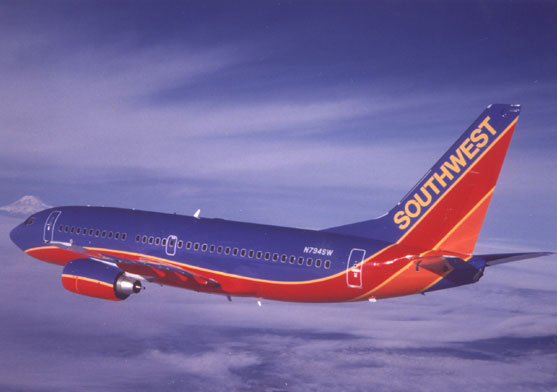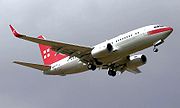 passenger getting ready to board my airline flight. There was an advertising poster hung on the jetway featuring a picture of an airplane. The passenger pointed to the winglets and asked me 1. what they were. I haven't flown an airplane with winglets for years and was happy that I still remembered! 2. And were they on airplanes from every manufacturer? The airplane pictures I found on the website didn't have any winglets, which leads me to believe they are, as the passenger asked, and at least for this airline, 3. a "new thing."
passenger getting ready to board my airline flight. There was an advertising poster hung on the jetway featuring a picture of an airplane. The passenger pointed to the winglets and asked me 1. what they were. I haven't flown an airplane with winglets for years and was happy that I still remembered! 2. And were they on airplanes from every manufacturer? The airplane pictures I found on the website didn't have any winglets, which leads me to believe they are, as the passenger asked, and at least for this airline, 3. a "new thing."The wingtip devices increase the lift generated at the wingtip, and reduce the lift-induced drag caused by wingtip vortices, improving lift-to-drag ratio. This increases fuel efficiency in powered aircraft, and cross-country speed in gliders, in both cases increasing range.[1]
2. Wing fences, are a winglet variant with surfaces extending both upward and downward from the wingtip. Both surfaces are shorter than or equivalent to a winglet possessing similar aerodynamic benefits. Wingtip fences are the preferred wingtip device of Airbus, employed on all their airliners except for the A330 and A340 families. The Airbus A350 will also make use of winglets rather than wingtip fences.
Wingtip fences are the preferred wingtip device of Airbus, employed on all their airliners except for the A330 and A340 families. The Airbus A350 will also make use of winglets rather than wingtip fences.
3. Blended winglets
A blended winglet is intended to reduce interference drag at the wing/winglet junction. A sharp interior angle in this region can interact with the boundary layer flow causing a drag inducing vortex, negating some of the benefit of the winglet. The blended winglet is used on business jets and sailplanes, where individual buyer preference is an important marketing aspect.
Blended winglets have been offered as an aftermarket retrofit for Boeing 737,[1] 757 and Raytheon Hawker 800 with winglets series aircraft by Aviation Partners Inc., and the 737 version is now standard on the Boeing Business Jet derivative.
The Citation X I am flying now doesn't have wingtips. But [w]inglets are also applied to many other business jets to reduce take-off distance, enabling operation out of smaller secondary airports, or allowing higher cruise altitudes for overflying bad weather, valuable operational benefits for corporate travel. In addition to factory installed winglets on new aircraft, aftermarket vendors developed retrofit kits for popular jets and turboprops, to improve both aerodynamics and appearance.


No comments:
Post a Comment